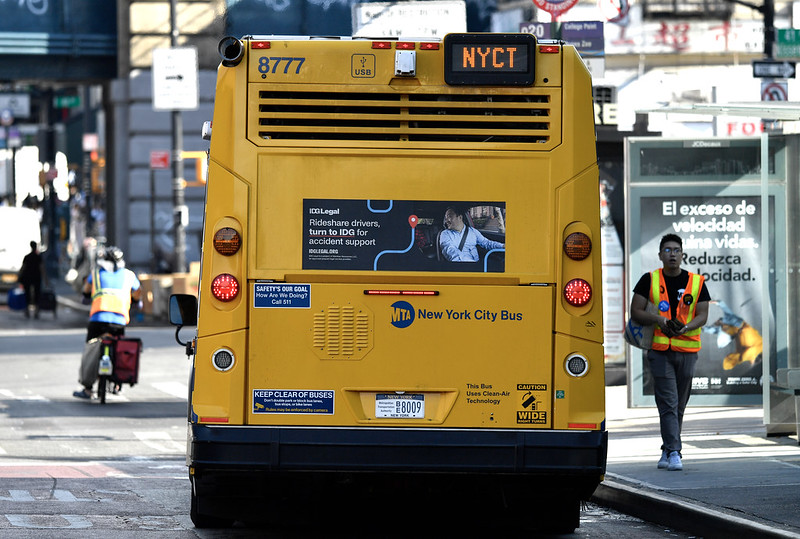The long-anticipated redesign of the Queens bus network officially launched on Sunday, June 29, marking the most significant overhaul of the borough’s bus routes in nearly 70 years. With temperatures nearing 90 degrees under clear skies, commuters gathered at stops across Queens, largely taking the changes in stride.
At the newly added Q12 bus stop at Northern Boulevard and 147th Street in Flushing, riders appeared more concerned with escaping the heat than navigating the new system.
“I heard about the changes, but I just want to get in the air conditioning,” said Javier, a Q12 rider.
For another commuter, the rollout felt routine. “I don’t normally take the bus, but it’s been good so far,” he said.
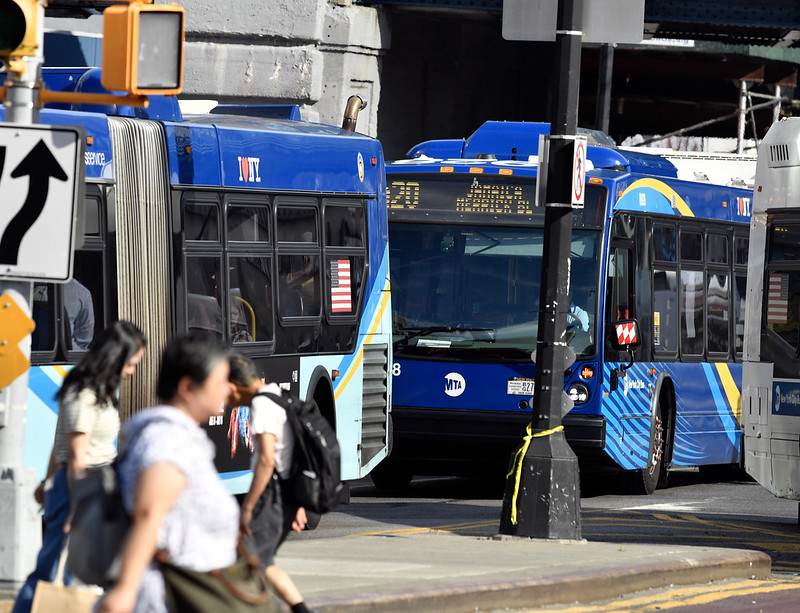
The redesign’s Phase 1 rollout primarily affects Eastern Queens and Ridgewood and includes major changes to several routes, such as the Q12 and Q13. The Q12 now offers all-day service along Northern Boulevard between Little Neck and Flushing, while service along Sanford Avenue has been discontinued and replaced by the Q13 and Q65.
Sunday’s debut is part of a broader effort by the MTA to modernize its bus network, which had remained largely unchanged since the 1950s. According to MTA officials, the full redesign will provide improved travel options for approximately 800,000 daily riders in the borough.
“The Queens bus network redesign is a once-in-a-generation opportunity to be able to do things right for Queens riders and we are excited to launch the first – and biggest portion – of the redesign,” said Demetrius Crichlow, NYC Transit president.
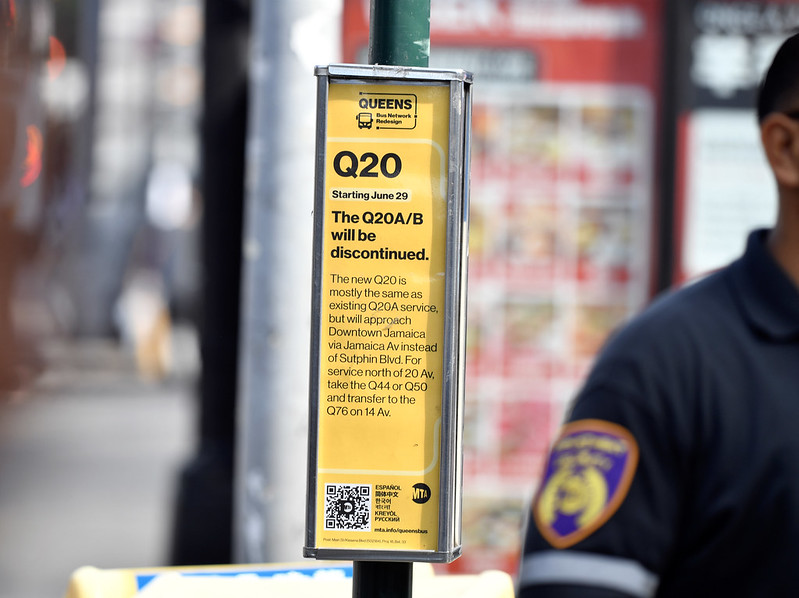
The redesigned network consists of 124 total routes—94 local and 30 express—representing a net gain of 11 routes. The MTA says the system represents a $33.7 million annual investment in improving bus operations.
Elected officials praised the changes as a long-overdue step toward equity in transit access.
“After years of planning and public outreach, I’m thrilled to welcome a bus redesign that focuses on providing faster, more reliable service that will keep Queens moving,” said Assembly Member Claire Valdez, who represents Woodside and Long Island City. “Especially in neighborhoods without subway access, buses are a critical lifeline and New Yorkers deserve a bus network they can depend on.”
To help commuters navigate the transition, the MTA has deployed customer ambassadors at high-traffic stops throughout the borough. These workers are tasked with answering questions and distributing information about the new routes. The ambassador program launched on June 16 and will continue through July 12. Ambassadors will also return in late August for the Phase 2 launch, which will bring changes to additional neighborhoods.
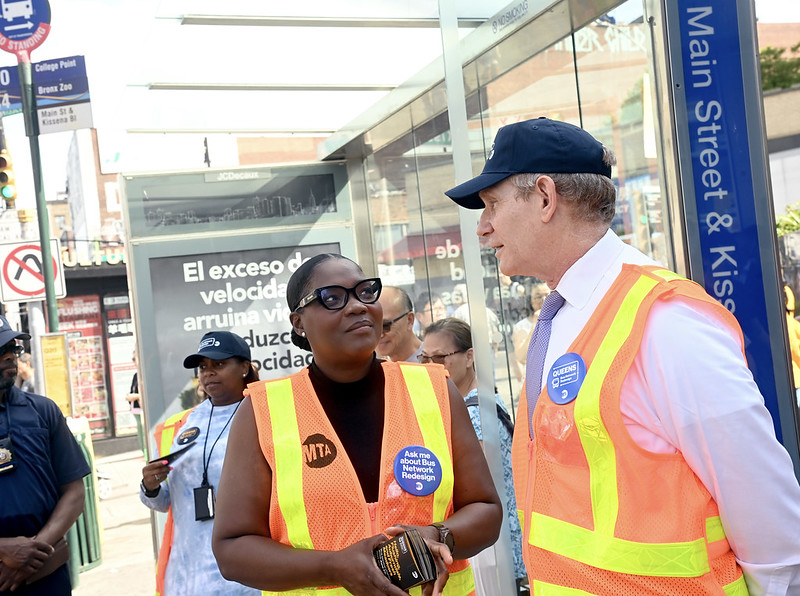
On Monday morning, MTA Chair and CEO Janno Lieber joined ambassadors near the Flushing–Main Street 7 train and LIRR stations at the Main Street/Kissena Boulevard Q20 and Q44-SBS bus stop to greet riders and provide information on the redesign.
Despite the MTA’s outreach, some riders were still caught off guard.
“I can’t believe they changed the bus stop, bro!” one man shouted into his phone as he rushed toward another Flushing stop.
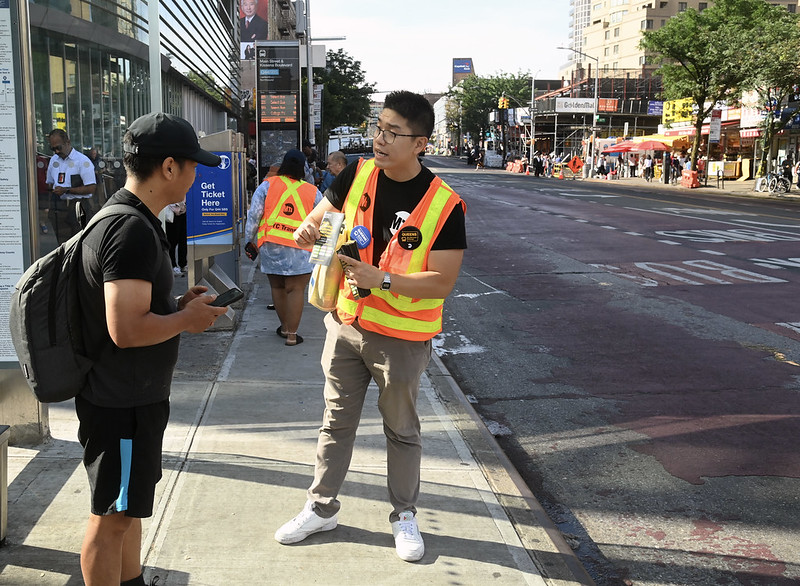
A Q12 bus operator said the transition was relatively smooth. “There was some confusion on the part of the passengers, but I think it just takes a few days to settle,” he said. “It just started.”
Not all reactions have been positive. Some civic and transit groups have expressed concerns that the changes could negatively impact already underserved communities. In Assembly Member Valdez’s district, Woodside residents launched a petition to preserve the Q32 bus stop at Roosevelt Avenue and 58th Street, which is slated for removal on Aug. 31. The next closest stop is at Roosevelt Avenue and 61st Street.
Passengers United, a local transit advocacy organization, issued a statement criticizing the MTA for what it characterized as a lack of community engagement and disproportionate cuts in vulnerable areas.
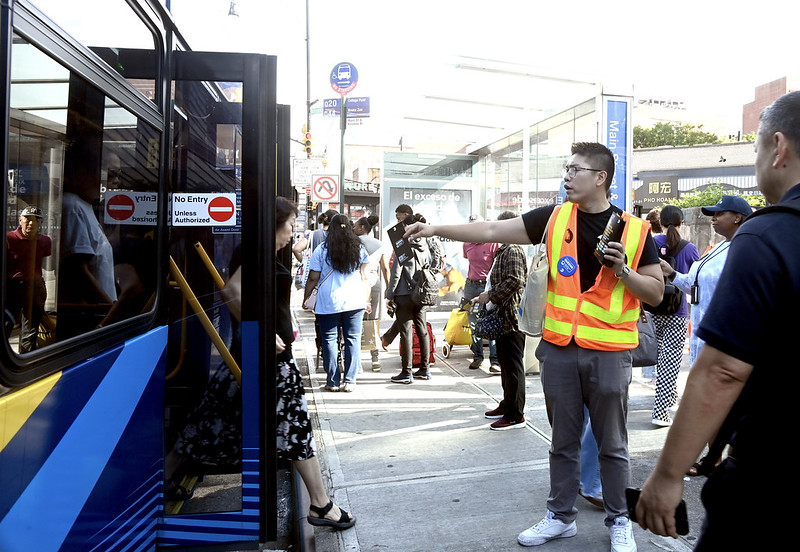
“It is very clear that MTA leadership did not listen to the pleas of Queens bus riders,” the group said. “Nor has MTA leadership expressed an interest in ensuring that the most vulnerable transit riders would not be disproportionately harmed.”
In contrast, Riders Alliance, another advocacy group, praised the redesign as a much-needed investment in Queens’ transit infrastructure.
“This redesign proves that positive, transformative change is possible even after generations of neglect,” said Danny Pearlstein of Riders Alliance. “After years of rider organizing, MTA planners worked for more than half a decade to improve service on some of the slowest and least reliable commutes in the nation. Governor Hochul and the legislature also delivered $30 million to run more buses, particularly in communities far from the subway.”
Queens residents can learn more about the redesign by visiting the MTA’s website at mta.info, which includes a Route Look-Up Tool. The feature allows riders to search for updated routes and compare service changes by selecting from a drop-down menu.

